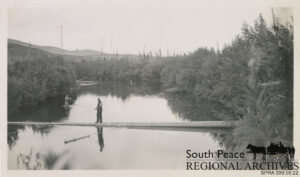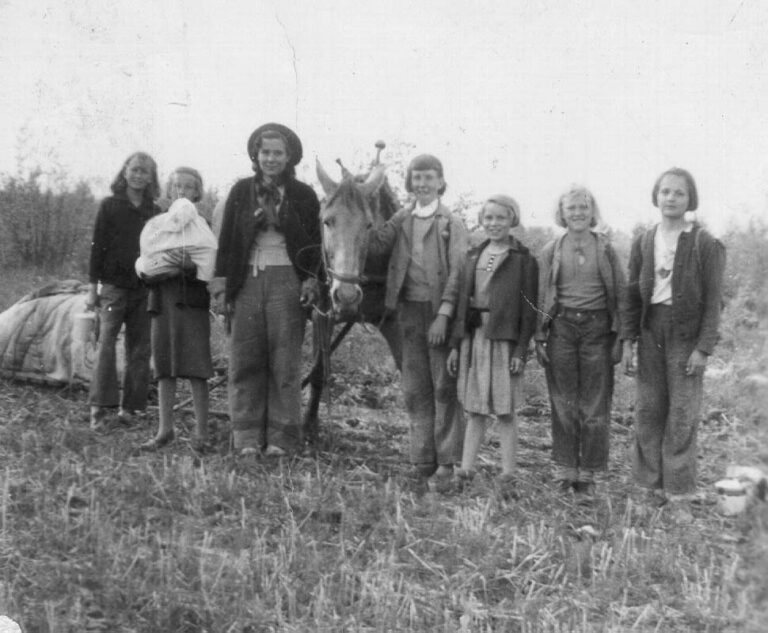Image: Lucy Lundblad taking the girls fishing, May 1940 (SPRA 175.055.05)
People often compare research at the Archives to digging for treasure. I think it is a little bit like fishing. The best place to start fishing at the Archives is through our website. Hopefully you already know your way to our online fishing hole. If not, what are you waiting for? Let’s get started.
When you embark on a fishing expedition, you need three things: bait, tools, and a place to fish. When conducting research, your search terms will act as your ”Bait.” The best way to dig up bait is to annoy your relatives with a lot of pesky questions about your great-grandaunt or that distant patriarch who supposedly robbed a train. All that annoyance activity should help you generate a list of names, dates, and places to research. Every tiny morsel has potential for your bait list.
Next, you need your tools. You will want to take notes as you go otherwise, you may find yourself returning to the same spot to retrieve that fish you lost. So grab your pencil and paper, start up that excel spreadsheet on your tablet, or open that cloud doc on your phone. Be ready to record your catch.
Now you need a place to fish. Ready your bait and cast out into the waters, or in this case, our online research “sweet spots”. Last year, over eighteen thousand visitors from around the world visited our website to fish for answers. There are several prime spots to choose from starting with the finding aids— where we list all the archival collections already arranged and described. These collections include a brief history about the creators and may yield all that you need. There are also several online databases that allow you to “fish” through indices for community history books, reference files, and newspapers, as well as our digitized photographs. Even our most experienced fishers may not realize that the Archives is also home to an expanding library related to the South Peace Region. We keep a list of our reference books online for your browsing pleasure.
In some cases, you may find all you need at our online destination: that story about great-grandaunt Sela’s lingerie and haberdashery business in the collection biography or the photograph of that rascally five-times-great-grandpa Johnson on your mother’s side (no! your father’s side!). It was just what you were fishing for. Your successful foray may also yield bigger bait, for which you will need to take your boat into deeper waters. In this case, deeper waters is the Archives facility itself. There you can cast your line into archival folders, reference files, and photograph collections.
This part of the fishing expedition is often the most rewarding and sometimes the most disappointing. The thrill of seeing new sights does not always make up for the lack of discovery. Not all fishing expeditions are successful in the actual fish-catching department, after all. Sometimes the success is in being able to take part in the excursion.
This process of discovery is one of the beautiful things about archives in a democratic society. Except in collections where personal privacy is a consideration, our records are open to the public. Online resources and on-site collections allow “fishers” of all skill and interest levels to “fish” through the records for information about their families, local history, and government records. We keep a healthy stock of various types of fish – textual documents, photographs, maps, film and audio recordings, to name a few, in order to provide a reasonable chance that you will find the fish you are looking for when you visit our website or enter our doors.
Of course, it helps to have a guide with you when searching unknown waters for records. The friendly staff at the South Peace Regional Archives are happy to show you how to set your bait and where to fish in the hopes that you will reel in the big one. Maybe it will be the catch of the day.
This article was originally featured in the September 2018 issue of Telling Our Stories.

